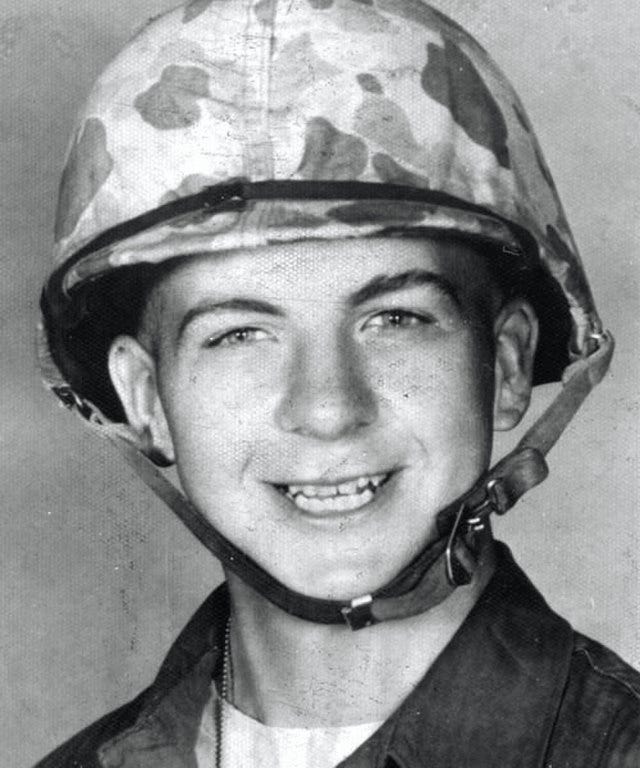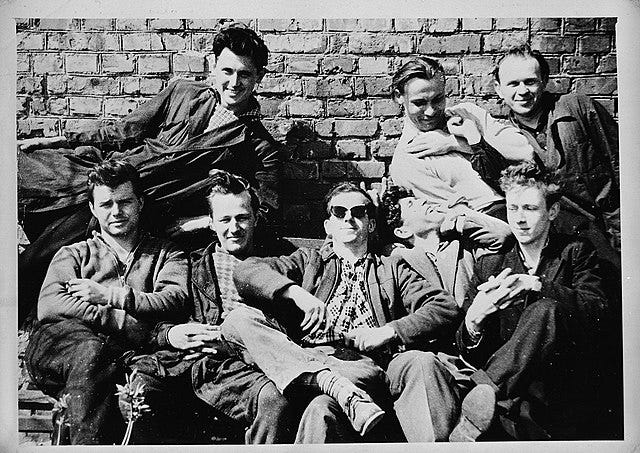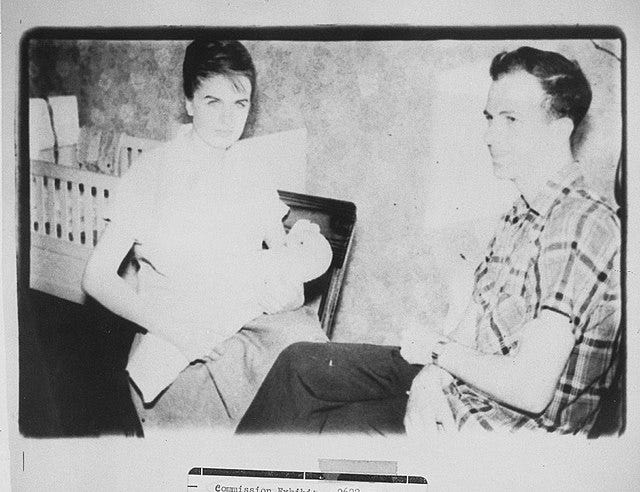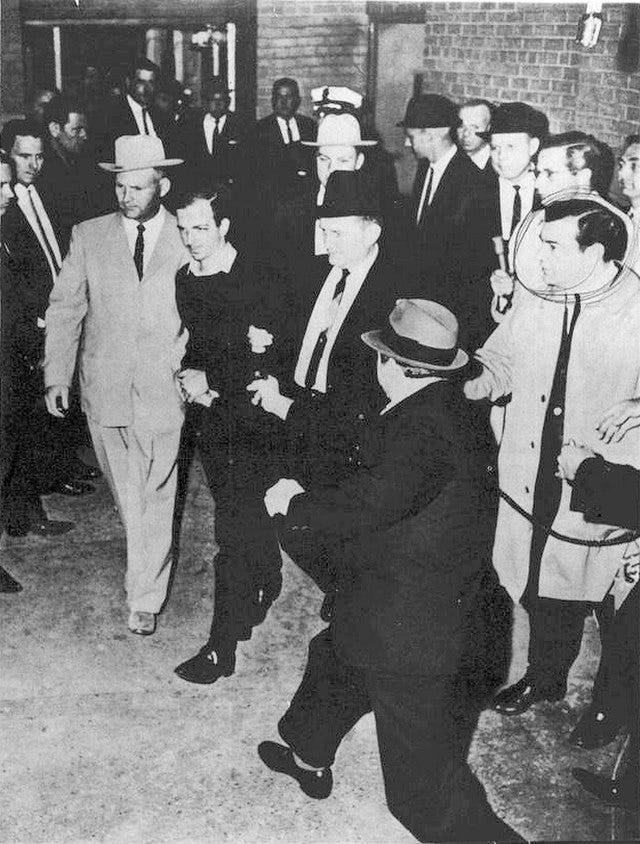Exploring the Life of Lee Harvey Oswald: An Assassin's Journey
Written on
Chapter 1: The Early Years
Lee Harvey Oswald, a name synonymous with the assassination of President John F. Kennedy, had a childhood that many argue may have shaped his future actions. This narrative forms a crucial part of my upcoming novel, where I aim to shed light on his lesser-known past.
Born on October 18, 1939, in New Orleans, Louisiana, Oswald's life was marked by tragedy from the beginning. His father, Robert Edward Lee Oswald, a World War I veteran, passed away just two months prior to his birth. Oswald’s family included an older brother, Robert Jr., and a half-brother, John Pic, from his mother Marguerite Frances Claverie’s previous marriage.
At the age of 12, Oswald's family relocated to New York to live with John. However, this arrangement was short-lived due to escalating tensions, which included an incident where Oswald allegedly threatened his mother and John's wife with a knife. They returned to New Orleans, where Oswald, as a teenager, began to resonate with the ideas of communism and Marxism—an inclination that developed during the Cold War and the onset of the Red Scare.

Oswald's journey took a pivotal turn when he joined the United States Marine Corps on October 24, 1956, at the age of seventeen, thanks to his older brother's guardianship. Although he displayed proficiency in marksmanship, his military career was marred by multiple court-martials. Seeking to care for his ailing mother, he was discharged on September 11, 1959.
Shortly after his discharge, Oswald traveled to the Soviet Union in October 1959, hoping to defect and renounce his American citizenship. When denied, he resorted to self-harm to express his desperation. By October 31 of that year, he officially relinquished his passport at the U.S. Embassy in Moscow and found employment at a factory in Minsk.

By 1961, boredom led him to voice his dissatisfaction in his diary about the lack of social activities available in the Soviet Union. It was during this period that he met Marina Nikolayevna Prusakova, marrying her and welcoming their first child, June. In June 1962, the family returned to the United States.

Settling in Fort Worth, Texas, and later in Dallas and New Orleans, Oswald cycled through various jobs, often being dismissed due to his poor work ethic and confrontational demeanor. During this time, he attempted to travel to Havana, Cuba, but his efforts to join the communist cause were unsuccessful.
In Dallas on April 10, 1963, Oswald made an assassination attempt on retired General Edwin Walker by shooting at him through a window. Walker survived with minor injuries, and notably, Oswald was never charged for this incident. Interestingly, the bullets used in this attack were later matched to those used in the assassination of President Kennedy. Marina Oswald later testified that her husband confessed to the shooting, believing Walker to be a fascist.
In October 1963, Oswald secured a position at the Texas School Book Depository as an order filler, while Marina resided in Irving, a Dallas suburb, to give birth to their second daughter.
Chapter 2: The Day of Infamy
On the morning of November 21, 1963, an unusual event occurred—Oswald hitching a ride with a neighbor and coworker to Irving, which he typically did not do. They returned the next morning with an oddly shaped package. Oswald claimed it contained curtain rods. He reported to work on time that day.
At 12:30 p.m., as the presidential motorcade passed the Book Depository, gunshots rang out. Witnesses placed Oswald at the scene, yet no one saw him fire the weapon. Investigations, including the Warren Commission, concluded that Oswald had fired three shots, killing Kennedy and injuring Texas Governor John Connally. Despite immediate medical attention, Kennedy was pronounced dead at 1:00 p.m.
A manhunt ensued, with witnesses directing police to the sixth-floor window of the Depository. Oswald, who had encountered a police officer without being detained, returned to his boarding house, where he collected a revolver. He was later stopped by Officer J.D. Tippit, who was fatally shot by Oswald.
After being arrested in a theater, Oswald faced relentless questioning regarding both murders but never confessed. During a press conference, he claimed to be merely a scapegoat for the events that transpired.
On November 24, 1963, while being transferred to the county jail, Oswald was shot by nightclub owner Jack Ruby in a shocking moment captured on live television. Ruby claimed his actions were motivated by grief over the president's death, but speculation of a broader conspiracy surrounding Oswald’s death continues to persist.

Theories abound regarding the motivations behind the assassination, with some implicating Fidel Castro or suggesting involvement from Vice President Lyndon Johnson. The complexities of this tragic event leave many questions unanswered, reinforcing the notion that we may never fully understand the truth behind Kennedy's assassination.
In the video "Toward a Psychological Understanding of Lee Oswald, Assassin," we explore the intricate psychological factors that may have influenced Oswald's actions, shedding light on the man behind the infamous assassination.
"Bizarre Things Lee Harvey Oswald's Mother Did After JFK's Assassination" offers a fascinating look into the life of Oswald's mother, revealing the unusual behaviors she exhibited in the wake of her son's actions.
For further insights into the countercultural revolution of the 1960s and its impact on American society, or to learn about the history and significance of the Berlin Wall, feel free to explore my other articles.
I invite you to engage with this narrative by leaving comments, clapping for the article, and following my work. To access more of my writings, please visit my website at www.trevordsilva.com.